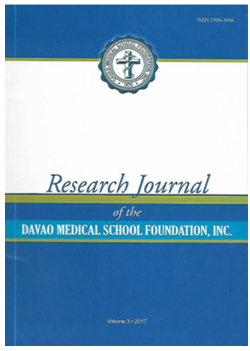Complete Blood Count, Potassium and Sodium Levels of Stored Whole Blood in A Local Blood Bank in Davao City
AUTHOR
Yap, J. C., Nobleza, G. G., MD, Aquino, M. A. M., Ching, J. F. I., Elevazo, J. F., Fong, L. H. O., Leyva, E. L. G., Monday, J. M. P., Pasaylo, R. R. I., Sepulveda, M. B., Roldan, I. R., Tinagan, J. F. F., and Wong, J. P.
KEYWORDS:
Physiology, Stored Whole Blood, Potassium Levels, Sodium Levels, Percent Hemolysis, Blood Bank
ABSTRACT
As it is recognized that the need and demand for blood worldwide is great, it is important that the use of stored blood be done efficiently so as to maximize its potential to cater to the general population. Changes in the blood’s cellular and biochemical composition during storage are therefore of great interest in transfusion medicine as this has implication on its viability and on its effective utilization. The purpose of this study was to record the changes that occur in stored blood as monitored on a weekly basis from the date of extraction until the day of expiration. Blood (450 ml) was randomly drawn from ten healthy volunteer donors into CPDA-1 anticoagulant contaiing blood bags. Whole blood units were screened for HCV, HBsAg, Syphilis, HIV 1 and 2, and Malaria and were confirmed negative. Blood bags were palced in the blood bank refrigerator maintained at 2-4°C. Samples were collected and tested for hematologic and biochemical parameters on a weekly basis for five weeks from the day of extraction (Day 0) until Day 35. The mean levels of the different parameters were plotted on a linear graph. Results show increasing values can be observed with the hemoglobin, hematocrit, and RBC levels, and a decreasing value for the platelet count – although the changes were still wthin normal range in vivo. Percent hemolysis yieleded variable results although Day 7 showed a high percent hemolysis. Lymphocyte count was noted to increase from Day 0 to Day 35. I contrast, total white blood cells and neutrophil levels were observed to have decreased over time. With the biochemical parameters, a decrease in mean serum sodium level was observed while an increase in the mean potassium level was clearly observed on Day 7. The results showed that cellular and biochemical changes do occur with stored blood, and changes on these parameters were variable based on the duration of storage. The data still show that stored blood from day 0 to day 35 can still be used for blood transfusion. Knowing the changes that occur during storage of blood will allow efficient utilization of stored blood and may be used to guide clinicians in requesting for blood based on the clear indications for transfucion therapy, rather than on its duration of storage.


